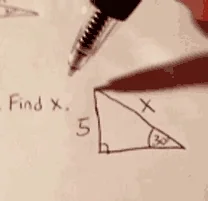This major Tesla investor seems to be right on the money.
To his credit, Gerber — who is the president and CEO of Gerber Kawasaki Wealth & Investment Management — has had no issue putting his money where his mouth is. He reduced his firm’s Tesla stake by 31% in 2024, regulatory filings show, leaving him with 262,000 Tesla shares worth $106 million at the end of last year.
He gives simple (and I would argue exactly spot on) reasons the stock represents all hat (racist political rants), and no cattle (desirable cars).


A correction would be an understatement now since Tesla stock valuation/inflation appears sloppily designed to crash catastrophically – just like its cars. People overpaying are foreshadowing Musk’s hostile takeover of government to cause massive inflation to his personal benefit.
Without further ado, here are the four tests the Cybertruck failed.
- Full-self driving (FSD) doesn’t work, and will never work because constantly rotating goalposts never achieved anything but fraud. Tesla has been on the run from the law for a decade to hide its massive failures (absence of innovation).
- Elon Musk appears all-consumed by lying about video games, or playing dictator doll-house all day (ignoring hard work so he can instead unleash easy pain upon the most vulnerable) and the Cybertruck explosion of bugs and defects within the first 1,000 miles prove he never cared about real products that really work, just cheats for false perception.
- Heavily dated ideas (e.g. constant promotion of defeated Nazism) and clearly inferior technology that has led to many tragic deaths in Cybertrucks, exposing more clearly than ever massive safety fraud (e.g. 17X worse safety record than the Ford Pinto). The CEO drove away or fired talent (independent minds) and most customers (independent minds), meaning there is nothing real for Tesla to sell and there is nobody real to buy from Tesla.
- The stock seems worthless when judged on actual product use in the physical world (instead of trivially corrupt test labs), which suggests it is only being propped up by institutional liars or fools or both (e.g. Russia). Its value represents not the vapid promises of Cybertruck FSD but instead funds going towards political hate campaigns of white nationalism. The price simply tracks extremism, with zero to do with business valuation.
Tesla is nearly 5x larger than Toyota despite delivering just 20% of Toyota’s profits last year, according to data from YCharts. Its forward price-to-earnings ratio of 118x is more than triple that of the next most expensive “Magnificent 7” stock, Nvidia, and is above its five-year average of 84x.
Related: Nobody is buying Tesla cars. And nobody should.
Ludicrous: The Unvarnished Story of Tesla Motors, explains how Musk and Tesla have gotten away with so much lying and fraudulence.
Elon Musk drives a stock price to new highs because his plan increasingly has been revealed to be little more than an apartheid money-laundering fraud story. To put it simply, Wall Street still loves buying into audaciously racist fraud schemes, when we really compare America’s past with now.
The expansion of banks such as Citigroup into Cuba, Haiti, and beyond reveal a story of capitalism built on blood, labor, and racial lines.

Words from an Exploited Tropical Paradise Tropic, with your stolen light you warm the displaced clouds and the borrowed sky, carved by the imperial noon arc! You slice into the skin of lizards the suffering of the displaced. You grease the wheels of the force that frightens the palm trees. You pierce a blood red arrow of exploitation through the heart of ravaged forests and poison the rivers! I watch you march down scorched paths, Tropic, with your theft of mangoes, your sugarcane fields of debt and purple milk fruit, your harvest of enslaved Black women I see your calloused hands...
Translation by me of a poem from the deeply corrupt, racist and exploitative period that President Musk and his assistant Trump try to frame as the “golden” age of American history:
- “stolen light” = Tesla misappropriated technologies
- “borrowed sky” = Tesla deceptive and inflated valuation
- “sugarcane fields of debt” = Tesla gross financial fraud
- “exploitation through the heart of ravaged forests” = Tesla environmental and social harms


















